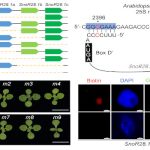From Fungal Diversity to People Diversity: Addressing the Gender Gap in Academia
In 2020, just 26% of professors in the Netherlands were women. This low percentage represents a battle for equality that started more than 100 years ago with one of the most influential female scientists and professors in the Netherlands: Johanna Westerdijk.
Gender Gap
The first female professor in the Netherlands was Johanna Westerdijk (1883- 1961). From a young age, she was determined to pursue a career in science. At age 17, she started attending the University of Amsterdam, but was initially not allowed to take the course in practical work in botany (Kerling et al., 1986). However, this did not hamper her love for plant science. After a short “pre-doc” in Germany, she went to Switzerland and completed a PhD (cum laude) in moss physiology. Back in the Netherlands, in her early 20s, she became the leader of the phytopathology laboratory Willie Commelin Scholten (ten Houten, 1963) — a position deemed unattractive by her male counterparts due to the low salary but proved to be the beginning of Westerdijk’s successful career (Boonekamp et al., 2019). One year later, she became the director of the Central Bureau of Fungus Cultures (recently renamed Westerdijk Fungal Biodiversity Institute). Under her direction, the fungal collection expanded from fewer than 100 cultures to approximately 9,000. This love for fungal diversity did not stop with fungi but extended to all people passionate about science. Westerdijk believed that everyone deserved equal opportunities.
Girl Power
In 1919, two years after becoming professor at Utrecht University, one of Westerdijk’s greatest scientific discoveries was yet to come. Elms (Ulmus hollandica-belgica) growing along streets and dikes were affected by an unknown disease. This situation piqued her scientific interest. She raised money from 996 Dutch municipalities to study and tackle this problem (Boonekamp et al., 2019). Five women from Westerdijk’s lab would be crucial in finding a solution to the wilting elms. Barendina Spierenburg showed that the disease was an epidemic among closely placed elms. Marie Beatrice Schwarz identified the pathogen Graphium ulmi (later renamed as Ophiostoma novo-ulmi) as causing wilt disease in elms. This finding, distrusted by male counterparts, was later reconfirmed by Christine Buisman. Last, Maria Ledeboer tried to control the pathogen by studying its physiology and Dr. Johanna Went started breeding elm trees resistant to the pathogen. These investigations paved the way for the solution that is now used to treat elms in the Netherlands and other countries (Boonekamp et al., 2019). To honor these important scientific discoveries, the wilting disease affecting elms was named the Dutch elm disease.
Academia and Gender Equality
Westerdijk represents an example of how one person can shape scientific culture. During her scientific career, she supervised 56 PhD students. Astonishingly, almost half of them were women. The equal gender balance she achieved soon fell into disequilibrium. During the second generation, female PhD students dropped to 5% but increased by 35% in the fourth generation (Faasse et al., 2019). These numbers reflect how difficult it is to achieve longstanding cultural changes. The battle for equality might start with one person, but it can only be maintained if the next generations keep fighting. Westerdijk believed in offering an opportunity to students independent of their gender, age, political views, or religion (Kerling et al., 1986) and this inclusive approach helped solve pressing plant pathologies such as the Dutch elm disease.
In 2020, women made up 44% of PhD students in the Netherlands and 46% in the United States. These numbers represent a more promising future. However, diversity and gender balance still need to be reflected in other roles such as professor positions. To have a functioning biological or academic ecosystem, diversity is the key.
References
- Boonekamp, P.M., Pieterse, C.M.J., Govers, F., Cornelissen, B.J.C., 2019. Johanna Westerdijk (1881– 1961) – the impact of the grand lady of phytopathology in the Netherlands from 1917 to 2017. Eur. J. Plant Pathol. 154, 11–16. https://doi.org/10.1007/s10658-019-01670-w
- Kerling, L.C.P., ten Houten, J.G., de Bruin-Brink, G., 1986. Johanna Westerdijk: Pioneer Leader in Plant Pathology. Annu. Rev. Phytopathol. 24, 33–41.
- Faasse, P., 2019. Genealogy of the Westerdijk academic family. Eur. J. Plant Pathol. 154, 5–10. https://doi.org/10.1007/s10658-019-01681-7
- Ten Houten, J.G. 1963. Obituary notice Johanna Westerdijk, 1883-1961. J. Gen. Microbiol. 32:1-9
______________________________________________
About the Author:
Maria Constantin holds a PhD in Plant Pathology from the University of Amsterdam a 2023 Plantae Fellow. She is working on an online platform called The Green Leaflet, which focuses on sharing plant science stories. You can find her on Twitter at @meconstantin001.



